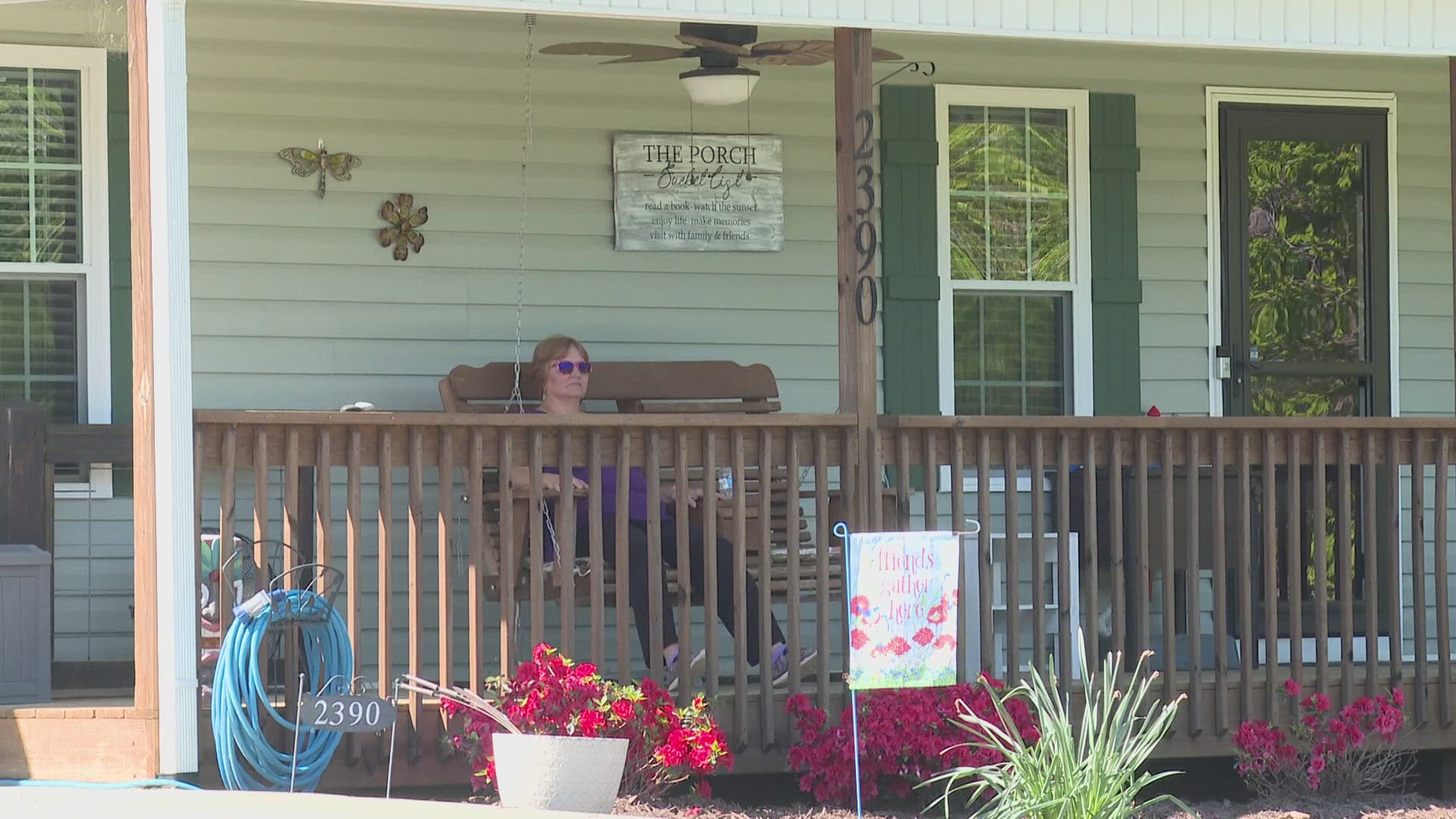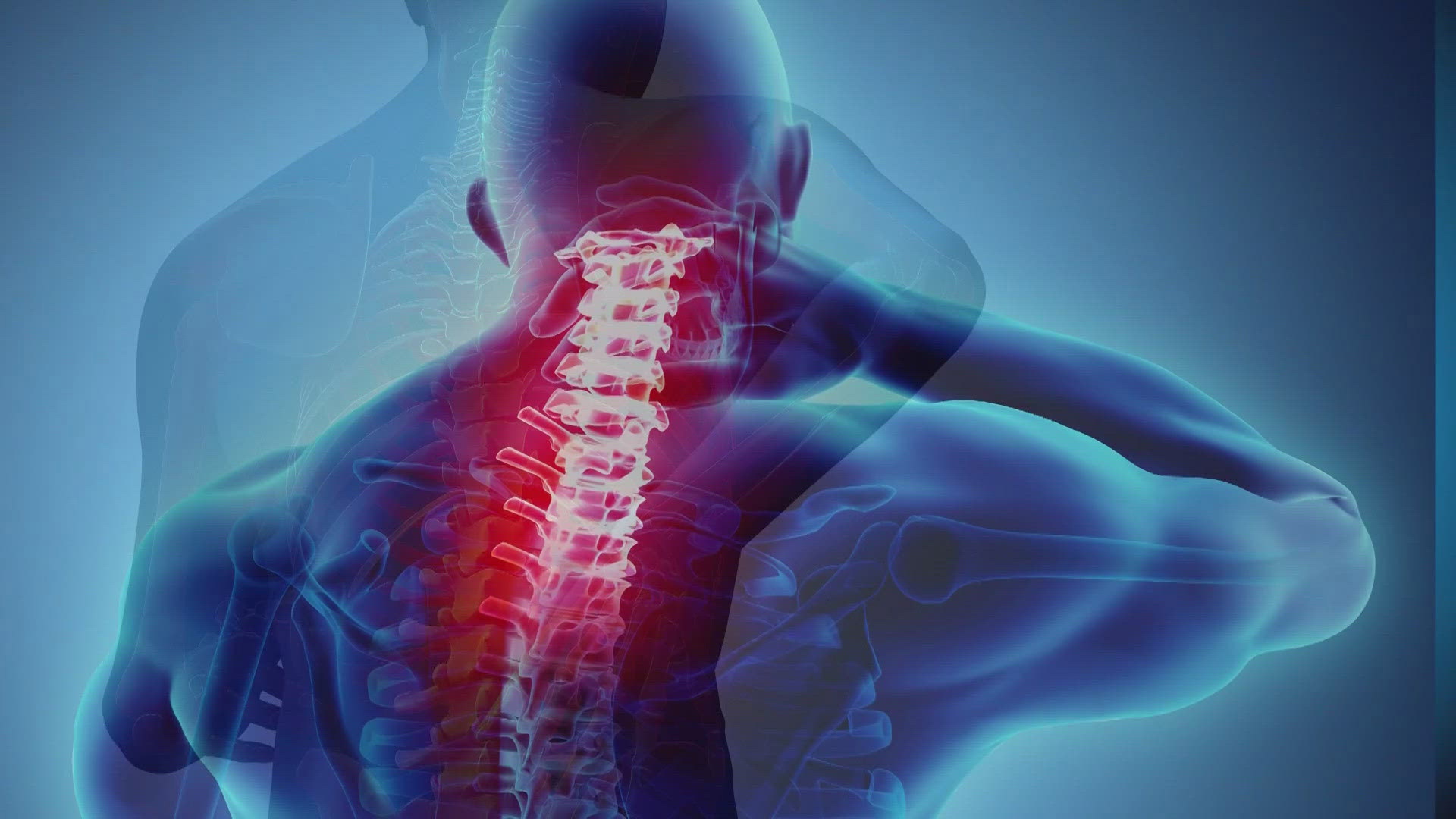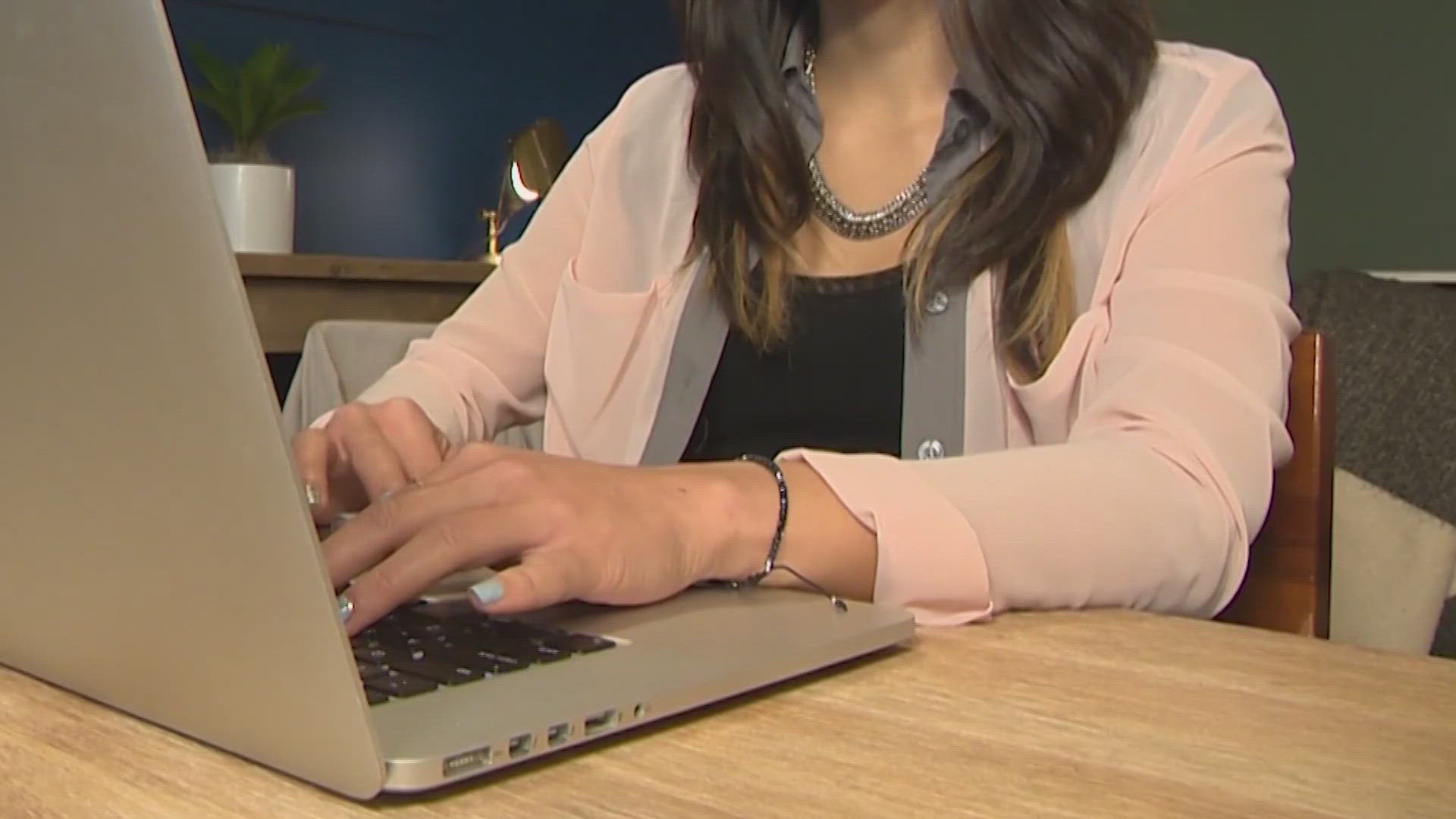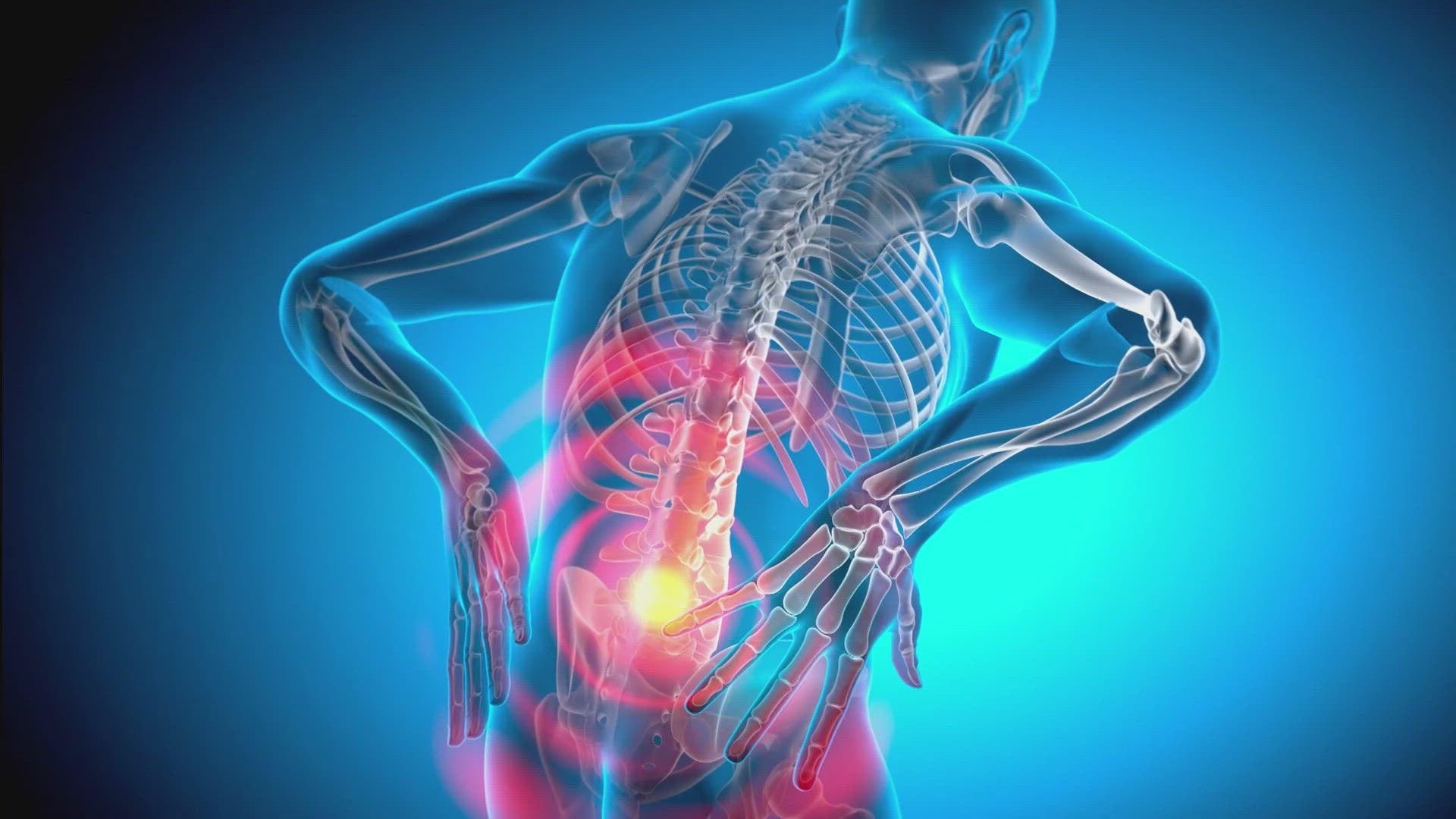GREENSBORO, N.C. — If you have back pain, you are not alone! The CDC says 39% of adults have struggled with it in the last three months. But help is out there! 2 Wants To Know is asking the experts about the best ways 2 Protect Your Back.
Pain Pills
For years now doctors have been following advice from the American College of Physicians that prescription pain relievers should not be your first or best option.
"Most people who take care of back patients intuitively know this," Dr. Ted Saer said back in 2017 when guidelines the ACP guidelines were published saying treat acute or sub-acute lower back pain with non-drug therapies first. It adds that physicians should avoid prescribing unnecessary tests and potentially harmful drugs. Time and exercise help heal just as well as medications.
"Being active is really important for getting over the episode of back pain or living with chronic back pain,” Saer said.
The American College of Physicians report was published in a leading medical journal. It lines up with what chiropractors like Dr. Darren Beavers have known for years.
Spinal manipulation along with acupuncture, hot-or-cold therapy or even yoga work better than drugs.
"Pain pills mask the symptoms and then cover up the symptoms instead of actually treating what is causing the pain,” Beavers said.
Another finding: Tylenol is not effective when it comes to the lower back. If you do take a pill, Advil work best along with Aspirin. From there, take a muscle relaxer. But there's no need to take an expensive and possibly addictive opioid.
"But the chronic pain, that has been going on for months, Opioid medications are not a good idea,” Saer said.
Heat and cold
One of the biggest questions online about back pain is when you're hurting should you apply heat or cold to help? Here's the official answer from Harvard Medical School:
"You may be a better judge than your doctor. Nerve fibers that carry pain sensation also sense change in temperature. As a result, stimulating the nerves with either heat or cold can diminish your discomfort, so you can choose which one to try. Both may ease your pain."
While they both work for nerve pain, they each have their own benefits when it comes to repairing your back tissues. Right after an injury ice within the first 72 hours can help minimize swelling and inflammation. Then switching to heat will increase blood flow in the area and help your body repair itself faster.
Change your desk
Doctors say they've seen an increase in back problems since so many people started working at home during the pandemic because looking at the computer the wrong way can do a real number on your body.
“You may be working off your couch, on your bed so you tend to have a more rounded posture,” Orthopedic Spine Surgeon Dr. Rahul Shah told CBS News during the start of the pandemic.
The doctor SAYS a flat surface is ideal. Make sure the keyboard is just within arm's length with your elbows bent.
“The neck is basically taken care of by looking straight ahead or looking down about 10 degrees,” Shah said. “For the low back, you want to try and sit up as straight as you can and taking breaks every 20-30 minutes if you can.”
If you are having aches and pains from the long hours in front of the computer, don't forget to get your regular basic exercise daily.
“We are all experiencing a new normal because of that we may not be doing our other aerobic activities like walking, or going over to a colleague. Important to keep that as part of our routine so we don't get fatigued working from home,” said Shah.
Chiropractic adjustment
According to the Mayo Clinic, “Chiropractic adjustment can be effective in treating low back pain, although much of the research done shows only a modest benefit — similar to the results of more conventional treatments.”
But the Mayo Clinic adds, “Not everyone responds to chiropractic adjustments. A lot depends on your particular situation. If your symptoms don't begin to improve after several weeks of treatments, chiropractic adjustment might not be the best option for you.”
According to research in the Pain Physician Journal, 70 percent of patients studied ended their care within 3 months because, “they were better and no longer needed treatment.”
According to the research, “patients reported (0–10 scale) what they believed their pain would be if they did not see their chiropractor and these reports were about 3 points above current pain.”
Retrain your brain
Even though your pain comes from your back, your nerves send those signals all the way to your brain which causes you to feel bad. But what if you could rewire your brain to think differently and ignore the pain? Research shows pain reprocessing therapy has a 66 percent success rate.
Dr. Yoni Ashar led research on the topic at the University of Colorado Boulder.
“Changes in the brain cause the pain to persist. Basically, the brain learns the pain, and what we try to do in this study was teach people how to unlearn the pain,” Ashar told CBS News.
In the study of about 150 people with chronic back pain, 66% of patients who had pain reprocessing therapy were pain-free or nearly pain-free after 4 weeks compared to 20 percent of the placebo group and 10% of the non-treatment group. Most maintained relief for a year. Regions of the brain associated with pain were also changed after therapy.
“The pain is always real, but if the problems lay in the brain and the solution may lay there too,” Ashar said. “And so we taught people to think differently and to feel differently about their pain, to understand that the pain is basically a false alarm.”
Vanessa Blackstone with the Pain Psychology Center explains a simple exercise you can do to get started:
“A beginning exercise that I often like to do with my own clients is teaching them to drop in. So when they're starting to get dysregulated, they're in pain, or know the pain is going to come up, I encourage my clients to recognize, oh, I'm doing it again. I'm stuck on the fear treadmill,” Blackstone said. “Let's drop in. Instead of continuing to have a dialogue with those thoughts, let's come back to our bodies. Dropping in means resting your bottom, dropping your belly, letting your ribs rest and rest your chest and use your collarbones by dropping your shoulders. Put some space between your back molars and if you need help with that, say the letter N, dropping your eyebrows on your forehead and just pause here before you continue the dialogue with those fearful thoughts.”
She says the exercise can help stop you from having a self-fulfilling prophecy that you’re going to be in a lot of pain.
“It's like catching ourselves in the process of getting stuck again and going, oh, I'm doing it again. I don't want to do that,” Blackstone said. “I know what this is. My body is safe. I am not as fragile as I fear I am. And coming back to our body instead of getting stuck in the dialogue with our thoughts, that then reinforces fear in the body.”
The Pain Psychology Center also put out this video showing a therapy in action:
Burn your nerves
How about this: burning off your nerves so you don't feel the pain anymore? They don't actually use fire in your body. Instead, a Novant Health pain specialist explains the procedure called an ablation.
"What we do is we use needles that will heat up at the tip of the needle and we place that needle right beside the anatomic location where those nerves live,” Dr. Kyle Sebastian said. “And the idea is: by quote unquote, burning that nerve, we kind of stop and prevent that from sending those painful signals back to the spinal cord, back up to the brain so that the patients are sensing less of that discomfort."
Here are three important things to know about this procedure.
First, the relief generally lasts for around six to 12 months then it may need to be redone. Second, it is for arthritis-type pain around joint spaces and doesn't work well for a pinched nerve. And third, to see if you qualify doctors will do a test run by injecting local anesthetic where they would burn the nerves. If you feel temporary relief, they can move forward after educating you about the possible side effects.
“Generally just some local irritation or some soreness from the procedure itself. And then afterward, since those nerves are primarily sensory in nature, shouldn't notice significant weakness or any kind of motor loss after the procedure,” Sebastian said. “There is the potential for some, what we call, neuritis or inflammation of those nerves as they begin to degenerate, as they begin to die off, that will commonly feel like a sunburn in the area that was treated.
That will get better on its own in about a week or two.”
Acupuncture
When back pain strikes, you might not think of treating it
with more pain. But that's what a growing number of people are doing turning to acupuncture where small needles are injected into trigger points.
Air Force veteran Scott Gomer received back pain treatment through his ear.
“I guess when I had the opportunity, I thought I might give it a try and see if it works for me,” Gomer said.
Tiny gold pins go into the skin of the outer surface of the ear.
“There are specific points in the ear that are used for pain,” nurse practitioner Nancy Patterson said. “Those are the energy fields that exit the ear, so we set our pins on those 5 most prominent energy fields."
The procedure is fast. Patterson can insert the pins in both ears in less than five minutes.
“It's a little bit of sting to it, but not too bad,” Gomer said.
His pain is back pain went from a three to one seconds after the last pin went into his ear. And he's not alone. A review of research on the issue published in the National Library of Medicine found that "acupuncture is more clinically effective in pain relief and functional improvement than no treatment" at all. The pins fall out after three to five days, but Patterson says the pain relief can last weeks.
"I love this,” Patterson said. “The patient feels better almost immediately. And it's so rewarding to me that I can make someone else feel better. And it's so easy. It's so easy."
The bottom line: Researchers say acupuncture can help provide short-term relief while you search for long-term solutions.
Surgery
For months Pam Ward from Rural Hall had persistent pain.
“It wasn’t achy. It wasn’t burning. It was just constant pain. Think about the pain of having your tooth pulled or something like that right at first. It would be like that kind of pain,” Ward said.
The feeling shooting down her legs from a pinched nerve in her back was so bad, she spent most of the day sitting or in bed. For months her life was on hold. When pain pills, the chiropractor and massages stopped working, a doctor recommended she go to Novant’s Spine Center to talk about surgery.
Doctor Michelle DeWitt knew right away what Pam needed. She recommended a lumbar microdiscectomy. A surgery that uses a microscope to make tiny cuts to free the pinched nerve from a bulging disk in your back. According to research in the National Library of Medicine, 79 percent of patients see good or excellent results, and less than one and a half percent of patients had complications from the surgery.
“This is generally a pretty safe surgery, but these things can happen,” DeWitt said.
Side effects could include infection, excess bleeding, blood clots, reaction to anesthetics, loss of bladder control and injury to nerves. But again, these are rare and DeWitt stresses this lower back surgery won’t leave you paralyzed.
“There's actually no spinal cord in the low back,” she said. “The spinal cord's in the top part of the spine.”
Ward says she has no side effects and within about a day Pam says she was up and walking again. A couple of weeks later she was spending time with the horses. And a couple of months later, she was traveling the world again – going to New York City with friends and walking several miles every day.
“It has given me my life back. I had lost what I could do, and it’s given it back to me,” Ward said.
So this surgery works great for 79 percent of patients, but there’s still 21 percent of people who it won’t help long term. Research shows that this is usually because they develop additional problems in other parts of their back later on. People less likely to see success tend to be smokers, with longer backs, and folks that work hard physical labor jobs. Those groups are more prone to re-injuring themselves.





